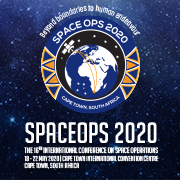›ChipSat , The MicroChip IS the Satellite
ChipSat will be hosted in Providence, RI by the Brown University Division of Engineering in collaboration with Cornell University, with sponsorship from the NASA Space Grant Consortia of Rhode Island and of New York.
Background
The past fifteen years have witnessed considerable innovation in spacecraft design. The most surprising of these have arrived in the form of smaller satellites: so-called micro-, nano-, and pico-satellites demonstrating relevant missions undertaken by 10 kg and even 1 kg spacecraft. The responsiveness and low-cost of smaller satellites (not to mention the mission prospects for large clusters of them) often represent benefits that far more massive spacecraft simply cannot match.
Thanks to enthusiastic adoption of the CubeSat standard by DoD sponsors, this roughly 1-3 kg class spacecraft has opened up opportunities for industry and universities to build and launch missions for total costs less than $100k. CubeSat standardization has also led to the creation of entrepreneurial companies providing systems and components with possibilities for further improvement in mission affordability.
ChipSats
Far smaller than CubeSats, in recent years a truly microscale satellite has been proposed made from large wafers that replicate entire spacecraft systems with the potential for significant cost savings, improved interoperability, and easy of manufacturability (University of Surrey).
Smaller still, individual microchip bodies are envisioned that, among other uses, can exploit the physics of dust in the solar system for propellantless propulsion, survive atmospheric reentry due to low ballistic coefficiency, and offer transformative operations concepts (Cornell University).
Research in orbital mechanics related to deep space propulsion via interplanetary physics is now an active, multi-year research activity robustly sponsored by the European Space Agency, although there is no analogous program in the U.S.
Our Response
During our nanosatellite workshop we began to scratch the surface of a greater notion—simply put—How small can we go? And if smaller, what is the value in doing so?
By examining prospects for a satellite perhaps no bigger than a fingernail—a satellite on a chip—the goal this year will be to answer these and other relevant questions.
To this end we are inviting representatives from government, industry, and academia to discuss the prospects and challenges of chip-scale spacecraft in a frank no-holds-barred examination of key topics.
The Audience is The Investigator
As we facilitate the workshop, organizers are seeking to stimulate a wide variety of presentations and panel discussions on topics relevant to the central subject of chip-scale spacecraft while avoiding significant overlap.
To cast our net widely, here are some topical areas to consider when planning remarks and discussion points (though by no means all that could be considered):
- Where is work on chipsats happening? Who are the players?
- Description of subsystems that can actually fit on a chipsat
- Project costs and benefits versus larger-scale spacecraft
- Special chipsat design and fabrication requirements (if any)
- In-flight spacecraft performance capabilities and limitations
- Unique maneuvering and stabilization methodologies
- Formation flying - multi-point grid - string of pearls
- Unique missions made possible -only- with chipsats
- "Killer app” missions that might launch a chipsat industry
- Science opportunities - near earth - planetary - interstellar
- Logistics of thousands - launch - deployment - ground control
- Space junk creation avoidance - is this a real problem?
- When will we see the first flight hardware in space?
- What other points should be covered on this topic?
Track this event on your Apple calendar














 United States
United States